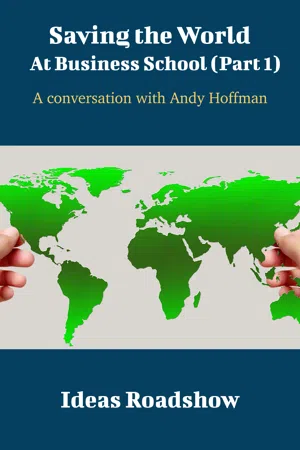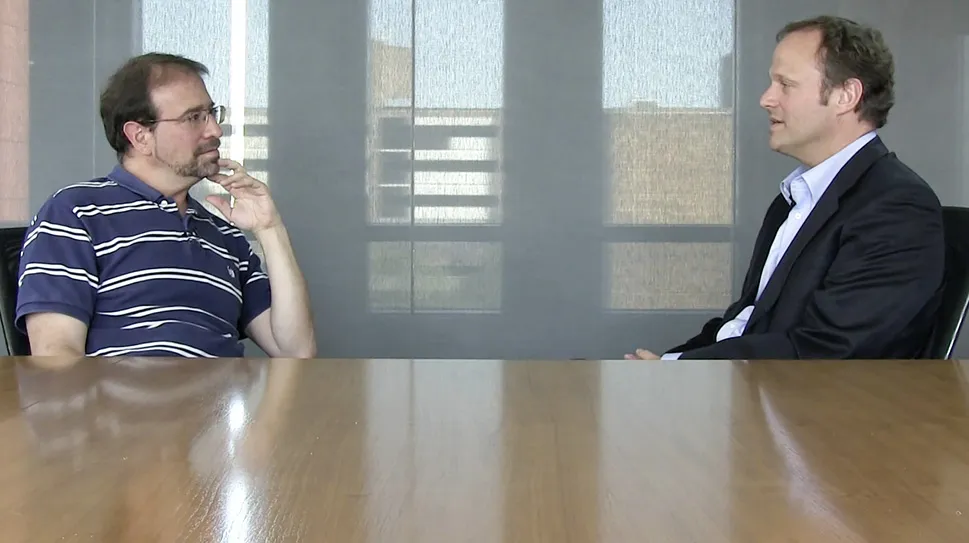![]()
The Conversation
![]()
I. Building a Career
Getting a lay of the land
HB: I’d like to start with your background, how you got into your present situation. Your undergraduate degree was in chemical engineering, right? And then you moved to civil engineering and management, I believe.
Throughout all of that, you seem to have maintained an interest in both environmental issues and the corporate world. How did that all start for you?
AH: Well, the environmental awareness started when I was an undergraduate. I had decided to pursue a chemical engineering degree without too much reflection: I liked chemistry, I liked math. I put as much thought into that as any 18 year old would.
And then Love Canal happened when I was an undergraduate. I thought to myself, That’s something I can use my chemical engineering training for, to make sure that sort of thing never happens again.
So I minored in environmental engineering, which at that time was just waste-water engineering. It wasn’t focused on pollution, or anything like that.
My first job was with the EPA (The Environmental Protection Agency), and I hated it. I worked there for two years and just felt like I was making paper. A funny tangent to the story is that I decided that I needed to be higher in government to have an impact. So I applied to Harvard and Berkeley for public policy, got in, and then froze. I couldn’t get myself to do it.
I helped a friend build a deck at the time and got a charge out of it, so I started scanning the classified ads in the newspapers and eventually got a job as a carpenter in Nantucket. That turned out to be Jack Welch’s house, the CEO of General Electric, and within 2 years I was supervising a 29,000 square foot house in southwestern Connecticut.
I did that for 5 years and then decided to go back to graduate school for construction management. Environmental issues got exciting then, since businesses started doing it because they wanted to. When I was working at the EPA, I was just a policeman: it was just a pain when I showed up and ruined people’s days. But now it was strategic. I was offered the chance to do a PhD at MIT and took it.
HB: And when you were a builder for all these years, were you still reading passionately about the environment? What was your mindset at the time?
AH: I was going in a totally different direction. Occasionally, there would be overlaps with environmental issues. I was once a permit writer for a facility in southwestern Connecticut, which turned into a Superfund site. I knew who the local activists were and I called them up and said, “I’m Andy Hoffman, and believe it or not I don’t work for the EPA anymore.” They were suspicious. They said, “Let’s meet with you first.” They had decided I was a plant for the company and they wouldn’t meet with me.
That was about the extent of it. I was really devoted to building and it wasn’t terribly environmental. I mean, 29,000 square feet? No one really needs that kind of space.
HB: So you went back and did your PhD at MIT in Civil Engineering and Management, where you were able to get some of those old fires rekindled, presumably. How did that happen?
AH: Well, it was just the idea of trying to focus on positive change, rather than mere negative enforcement. When companies started to see that there was a connection between their strategy and their ultimate interest in protecting the environment, that’s when it got really exciting.
There was a lot of activity at MIT at the time. John Ehrenfeld had just started an initiative in business and the environment there, and there was a critical mass of students. It was a very exciting time, right at the beginning when this was all brand new.
HB: How many other people were in the program?
AH: Well, there was no specific program. John taught in something called the Program on Technology, Business and the Environment, but as far as my degree went, I just made it up. MIT is a very entrepreneurial environment, and they’ll let you do that.
So I made up a dual degree. There were a number of other PhD students who were interested in the topic at the same time at various schools, and the Technology, Business and Environment program was developing a Master’s program, so a lot of students were interested in that too. John had a lot of energy around him. It was really exciting.
HB: When I think about civil engineering, I’m thinking bridges and all that—you know, the usual sort of stuff—but this seems completely removed from that. In what sense was this a standard civil engineering program?
AH: Well, usually a school will have an engineering management program within their engineering school. Often it’s in Industrial Engineering, but at MIT it was in Civil Engineering. So, I was actually in the Construction Management branch of Civil Engineering.
![]()
- What is “Love Canal”?
- Might there be disadvantages to being in the type of “entrepreneurial environment” that Andy describes his MIT graduate program as being? If so, what might they be?
![]()
II. Environmental Evolution
Fringe and mainstream
HB: One of the reasons I wanted to talk to you sprang from a sense of frustration that I’ve long had, and I’m sure a lot of other people have also had.
I think it’s changing a little bit now, but for a long time there was this image that there are two basic types of people. There were business types who lived in “the real world” and saying things like, “We’re living in a free-market world where we have to exercise our right to be entrepreneurial and create wealth.” And then you had people who were worried about the environment.
In other words, there was this very polarized distribution: you had the tree-huggers on one side and the business people on the other.
The business guys were busy raping the environment at any cost whatsoever to make a buck, while the tree-huggers were incredibly economically ignorant, sometimes even actively lobbying for things that might distort the economy in such a significant way that it might have negative repercussions for the environment.
This was how the debate was framed when I was younger, and it was very frustrating to watch, as there seemed to be so little common ground. I kept thinking to myself, Can’t we somehow get past this to bridge the gap between these two polarities that is obviously in everyone’s interest?
And when I look at much of your work, my interpretation, as a non-specialist, is that here, finally, is someone who is genuinely trying to constructively find some consensus, some sense of understanding, across this divide.
Is that the way you look at yourself? Or is that somehow too simplistic a picture?
AH: No, I think that’s accurate. But the extreme voices are still there, and they have a significant impact. I think of the environmental movement n...

